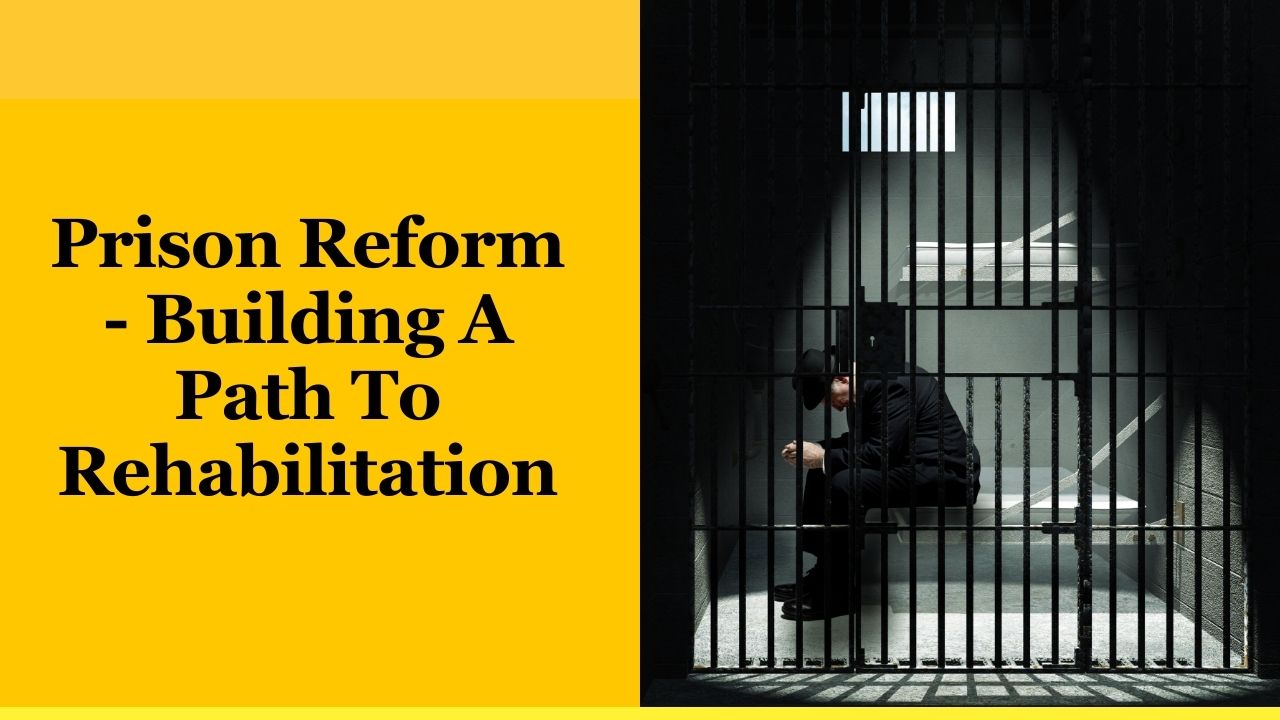Prisons are designed to serve justice, protect society, and deter crime. But over the years, one critical question has emerged: Are prisons actually reducing crime, or are they just recycling offenders back into the system?
In the United States, there are more than 1.9 million people behind bars, making it the country with the highest incarceration rate in the world. Despite spending over $80 billion annually on corrections, the outcomes are troubling.
A significant percentage of inmates are rearrested within just three years of release. This revolving door of incarceration highlights the need for prison reform.
The concept of prison reform is about building a path to rehabilitation rather than focusing only on punishment. Reform does not mean being soft on crime—it means being smart on crime.
By addressing the root causes of criminal behavior such as poverty, addiction, lack of education, and untreated mental health conditions, societies can reduce repeat offenses, save taxpayer money, and make communities safer.
In this article, we’ll explore why reform is needed, the major elements of rehabilitation programs, their benefits, challenges, real-world examples, and government initiatives that are paving the way for a more effective criminal justice system.
Why Prison Reform Is Needed
1. High Recidivism Rates
Recidivism refers to the likelihood of an individual returning to prison after being released. In the U.S., nearly 68% of released prisoners are rearrested within three years, and 77% within five years. This shows that traditional incarceration without rehabilitation fails to change long-term behavior.
2. Overcrowding And Costs
Overcrowded prisons are a serious issue. Many facilities house more people than they were built for, leading to poor living conditions, violence, and inadequate access to rehabilitation services. On top of this, the U.S. spends billions of dollars annually to maintain prisons, creating a massive financial burden on taxpayers.
3. Mental Health And Addiction
Around 40% of inmates suffer from mental health issues, while nearly 65% struggle with substance abuse. Without proper treatment, these individuals often repeat the same mistakes upon release, perpetuating the cycle of crime.
4. Social And Racial Inequalities
Minority communities, especially Black and Hispanic populations, are disproportionately represented in prisons due to systemic inequalities in policing, sentencing, and access to legal support. Reform is needed to create a fairer and more just system.
Key Components Of Prison Reform
Education Programs
Education is one of the most effective tools in rehabilitation. Providing basic literacy training, GED programs, vocational skills, and even college courses empowers inmates to build a productive future. According to research, inmates who participate in education programs are 43% less likely to return to prison.
Mental Health & Substance Abuse Treatment
Prison reform must include access to mental health counseling, therapy, and substance abuse recovery programs. Treating the underlying causes of criminal behavior makes rehabilitation more effective. Medication-assisted treatment for opioid addiction has also shown strong results.
Restorative Justice Practices
Restorative justice shifts the focus from punishment to healing. It involves dialogues between offenders and victims, opportunities to make amends, and community participation. This approach promotes accountability and closure for both sides.
Job Training And Reentry Support
Employment is one of the strongest predictors of successful reintegration. Job training programs in trades like plumbing, carpentry, automotive repair, and computer technology give inmates practical skills. Reentry programs also provide support with housing, counseling, and resume building to ensure smoother transitions back into society.
Policy And Legal Reforms
Reforms at the legal level are equally important. Examples include:
- Reducing mandatory minimum sentences for non-violent crimes.
- Expanding parole and probation options.
- Offering diversion programs instead of prison for low-level offenses.
- Reforming bail systems that unfairly punish low-income individuals.
Benefits Of Rehabilitation-Focused Reform
Here’s how shifting from punishment to rehabilitation impacts society:
| Benefit | Impact |
|---|---|
| Reduced Recidivism | Inmates with education/training are less likely to reoffend. |
| Economic Savings | Billions saved by reducing re-incarceration costs. |
| Improved Public Safety | Rehabilitation reduces crime rates long term. |
| Mental Health Improvements | Therapy reduces violence, self-harm, and relapse. |
| Stronger Communities | Reintegrated citizens contribute positively instead of returning to crime. |
Real Example
A RAND Corporation study found that every $1 invested in prison education saves $4–$5 in incarceration costs. This clearly shows that rehabilitation is not only humane but also cost-effective.
Challenges Facing Prison Reform
Even though the benefits are clear, implementing reform faces significant barriers:
- Public Perception – Some believe prison should only punish, making reform politically controversial.
- Political Opposition – “Tough on crime” policies are popular with certain voter groups.
- Funding Limitations – Rehabilitation programs require steady investment that many states lack.
- Overcrowding – Large inmate populations make it difficult to provide quality services.
- Systemic Inequality – Minority groups face harsher penalties and limited program access.
Global Examples Of Successful Reform
Norway
Norway’s system focuses on human dignity, trust, and education. Inmates live in dormitory-style housing, have access to work, and are prepared for reintegration from day one. Their recidivism rate is only 20%, one of the lowest in the world.
Germany
German prisons emphasize rehabilitation and vocational training, with inmates often working in industries that prepare them for employment after release.
United States Pilot Programs
Some states are experimenting with reform. For instance:
- California expanded educational opportunities, allowing inmates to earn associate degrees.
- Texas introduced faith-based and vocational training programs that cut recidivism rates.
Government Resources & Policies
Several U.S. government programs support prison reform and rehabilitation efforts:
- Federal Bureau of Prisons (BOP) – Runs education and job training programs.
- Second Chance Act (2008) – Provides funding for reentry programs.
- Department of Justice Initiatives – Focus on reducing mass incarceration and promoting fairness in sentencing.
For more official information, visit the U.S. Department of Justice.
The Role Of Society In Prison Reform
Governments cannot achieve reform alone. Communities, nonprofits, employers, and families must all participate. Employers can offer jobs to ex-offenders, nonprofits can provide mentorship, and society as a whole must shift its mindset from punishment to rehabilitation.
Prison reform is about creating opportunities for change while ensuring accountability. A punishment-only model has proven ineffective at reducing crime and comes with high costs to taxpayers.
By shifting focus toward education, therapy, vocational training, and fairer sentencing policies, societies can break the cycle of crime.
Rehabilitation gives inmates the chance to rebuild their lives, reducing the likelihood of reoffending and making communities safer. Reform is not just about helping prisoners—it’s about protecting society, strengthening communities, and using resources more wisely.
The path forward requires commitment, investment, and compassion, but the long-term rewards are well worth the effort.
FAQs
What is the main purpose of prison reform?
The main purpose is to reduce crime and recidivism by focusing on rehabilitation and reintegration instead of only punishment.
Do rehabilitation programs really reduce repeat offenses?
Yes. Studies show that inmates who participate in educational and vocational training are far less likely to reoffend after release.
How can the public support prison reform?
The public can support reform by advocating for fair laws, volunteering in reentry programs, and encouraging policies that focus on rehabilitation.




